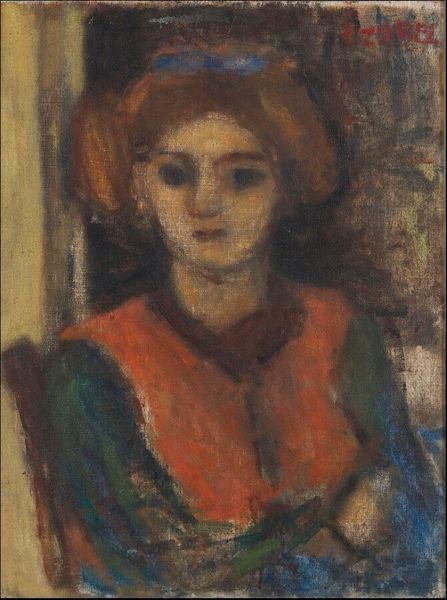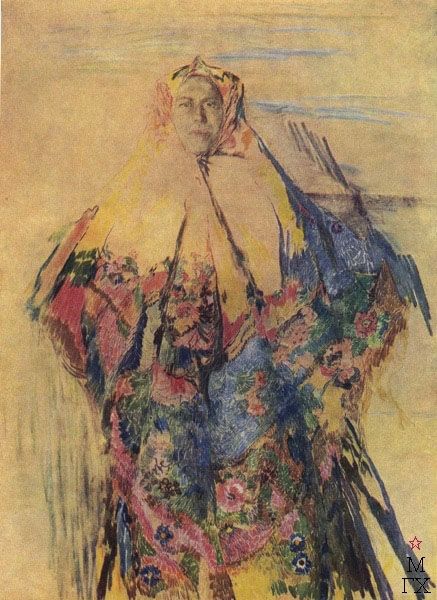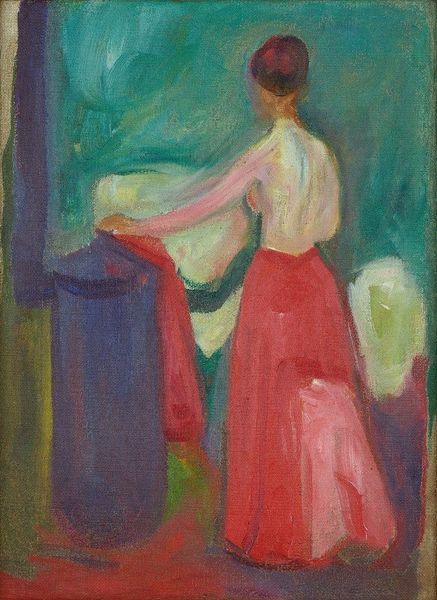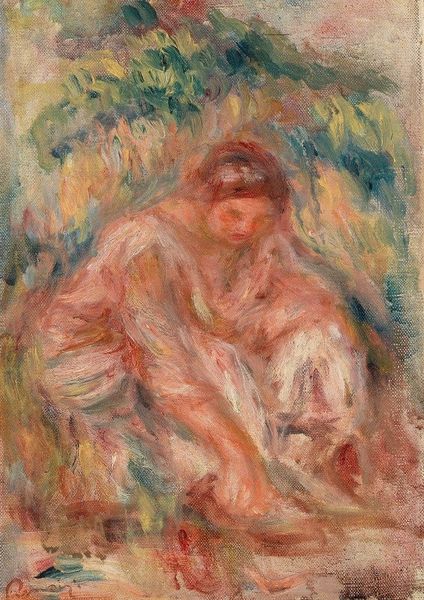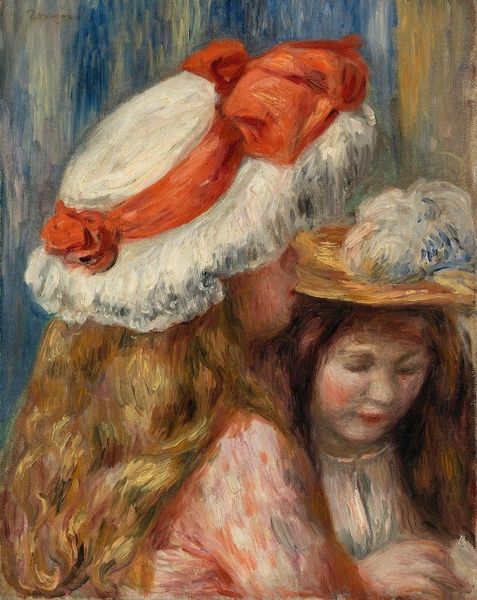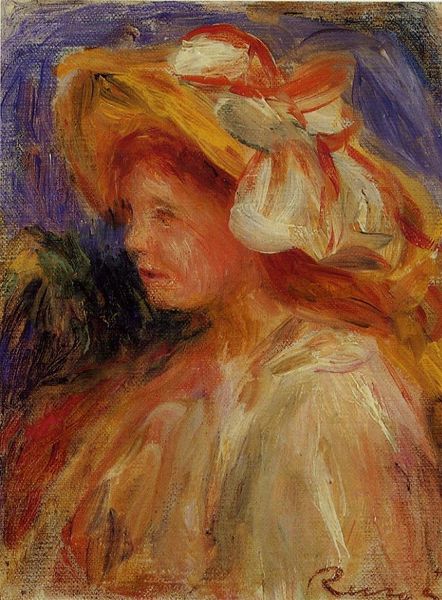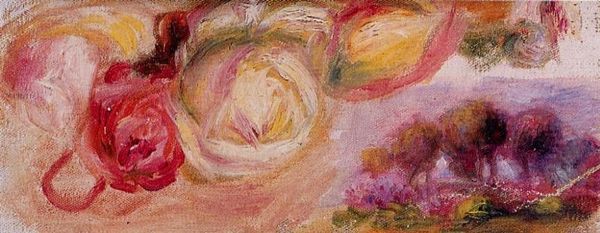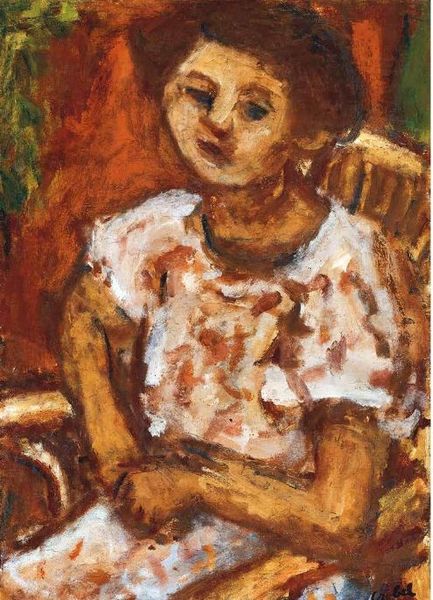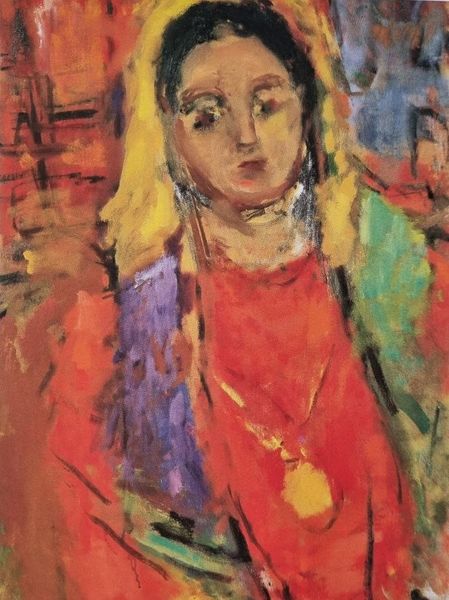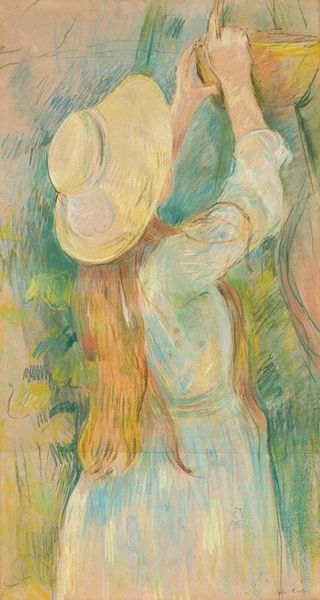
Copyright: Public Domain: Artvee
Editor: Here we have Renoir's "Etude de Têtes" from 1900, created using oil paint. It's a very busy piece, full of faces and vibrant colors. What really stands out is its informal feel—like a snapshot of a fleeting moment. What do you see in this work? Curator: It's fascinating to consider Renoir's "Etude de Têtes" through a lens of class and gender. He often depicted the leisure activities of the Parisian bourgeoisie. What’s striking is how these figures are decontextualized from labor. The women with their elaborate hats, for example—how might we interpret their visual presentation as an assertion of social standing during a period of intense societal change? Editor: So, you're saying their appearance is more than just aesthetics, it's making a social statement? Curator: Precisely! Renoir's Impressionistic style, with its focus on light and fleeting moments, can be interpreted as either celebrating the joys of modern life, or ignoring the growing socio-economic disparities of the era. Considering that this was created in 1900, on the cusp of significant political and social upheaval, how do we reconcile the seeming lightness of the image with the heavy realities of the time? Editor: That's a powerful point. I hadn't considered the social commentary that could be embedded within something so seemingly carefree. It almost feels contradictory now. Curator: Exactly! By questioning these assumptions, we engage more deeply with both the art and the society that produced it. Art isn't made in a bubble; it's always a product of its environment and cultural values, making these “carefree” paintings valuable documents of their time. Editor: I will definitely see Impressionism differently now! Thank you for pointing that out.
Comments
No comments
Be the first to comment and join the conversation on the ultimate creative platform.
